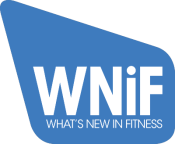Rachel Cohen shares her tips for working with clients and members who are aged 40 or older.
Less than a generation ago, turning 40 was thought of as middle aged, and starting a ‘Fitness Over 40’ exercise program would have been laughed at as a waste of time for it being too late to get in shape!
Now what we think of as ‘middle aged’ or ‘old’ has changed, as people live longer healthier lives. In fact, today ‘60 is the new 40,’ and exercise science has shown that you can begin to improve your health and fitness at any age.
Reduced cardiovascular fitness and loss of muscle mass are not just due to ageing; they are more often due to a sedentary lifestyle. When an average sedentary person reaches 65, they will have lost up to 35 per cent of their muscle mass and aerobic capacity, compared to when they were younger. But this can be prevented and even reversed, by becoming and remaining active.
Numerous scientific studies have shown that people over 40 respond really well to strength training and aerobic exercise. Most experts agree that a ten or more year decrease in biological age can be achieved with healthy lifestyle changes.
We all know that exercise is good for us; it strengthens the heart, lungs and muscles. It helps to regulate blood sugars and fat storage. It improves bone density and stimulates the production of ‘feel good’ hormones. It’s essential for weight loss and weight maintenance, and coupled with a good nutrition is vital in improving and maintaining healthy brain function. Being fit can also help slow down the ageing process and minimise the loss of strength, energy and cognitive function as we age.
However, for many clients and members, taking that first step or getting started (again), and sticking to a fitness routine can be challenging at any age, and this can be even more applicable to the over 40s who are typically juggling other ‘time priorities’ such as work, stress, raising a family or caring for ageing parents.
What is critical, however, is that these clients and members readdress their priorities and make a major commitment to fitness, if they are to enjoy healthy ageing and prevent and combat conditions such as:
- heart disease
- high LDL cholesterol
- high blood pressure
- type 2 diabetes
- risk of stroke
- obesity
- depression
- some cancers
- osteoporosis
So what type of exercise is best?
When turning 40, it’s important to remember that the joints are also 40 years old. This means, for most of your clients and members, a modification in exercise intensity and a routine that accommodates their physical and physiological changes or limitations will be necessary.
Exercises that these people may have done with ease in their 20’s or 30’s can create stress on an ‘over 40’ body, causing:
- wear and tear on the joints
- muscular aches and pains as muscles repair the micro tears created by exercise
- strains and tears in less flexible ligaments and tendons
- hormonal stress as the adrenals produce more cortisol to keep energy levels high and the body’s various systems running effectively. High cortisol levels cause general fatigue, lowered immune response, and encourage the body to store fat.
If your clients or members have been working out fairly consistently, reaching 40 is the perfect time for you, as the fitness professional, to reassess and modify their regular routine to include some structured goal setting. If they’re just starting or getting back into exercise after an extended break, your advice should typically include:
- Checking in with the GP. Any health issues or starting back after a prolonged period may need to get medical clearance.
- Setting realistic targets using smaller bite sized goals. Improving overall fitness might not happen overnight but it will happen.
- Warming up properly before starting, to promote good blood flow to the muscles and increase joint flexibility.
- Losing the ‘more is better’ mindset. Think cardio interval training rather than long runs.
- Choosing compound whole body ‘functional exercises’ rather than isolation exercises.
- Avoiding pushing too hard too fast, choosing lower impact options if needed.
- Focusing on good posture, form and technique to avoid injury. Lift and lower the weights in a slow, controlled manner using muscle strength not momentum.
- Cooling down and stretching. Cool down at a slower pace for the last five to ten minutes of workouts. Stretch all the major muscle groups. Especially important for those who may have lost a lot of flexibility.
- Ensuring adequate recovery time between training sessions. Rest time is crucial for repairing the body.
Here are seven essential functional strength exercises that I recommend be included in a workout program for an otherwise healthy client or member, aged 40 or older:
- squats
- lunges
- push ups
- overhead presses
- seated rows
- planks
- balance exercises
Incorporating these (basic) exercises with a with a sprinkling of variety will keep the fun fitness factor going, which is important considering that results are always better received if your clients are enjoying their workouts.
The bottom line is, whether your client is 40, 50 or over 60 it’s never too late for them to make changes and achieve significant benefits through a regular progressive and challenging exercise routine. If they are fit at 50 they are much more likely to be fit and healthy into their 70s and 80s. Be part of their success and help them rediscover what’s its like to look good and feel great at every age.
Article written by Rachel Cohen for the What’s New in Fitness Magazine – Summer 2015 Edition
